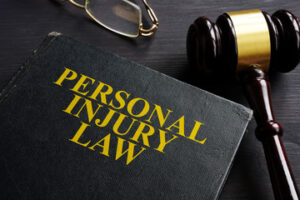If you have been harmed by someone else’s careless actions, it may be time to seek legal assistance from the Personal Injury Attorney. Your lawyer will help you understand your legal rights and pursue the compensation that you deserve.
Personal injuries can be devastating experiences. They can impact every aspect of your life—emotionally, physically, and financially.
Liability analysis is the process of determining the amount of money that should be awarded to you in a personal injury claim. It involves assessing your injuries, the damages you suffered, and the financial hardships they caused. This includes determining monetary economic losses, such as lost earnings and payment of medical bills, as well as non-economic damages such as pain and suffering, which is often used to measure your mental anguish or emotional distress as a result of the accident.
The process of establishing liability usually begins with your personal injury attorney gathering evidence and documentation. They will then start an extensive liability analysis by reviewing case laws, common law, and applicable statutes. This will help establish a valid rationale for pursuing a claim against the parties responsible for your injury.
Your lawyer will then seek out medical experts who can support your claims. They may discuss your case with these doctors in person or by phone. If they find the findings to be consistent with your claimed injuries, restrictions, and disabilities, they will request a narrative report from these medical professionals.
Once your doctor has discharged you, we will prepare a settlement package or demand that will be forwarded to the insurance carrier with a lengthy liability analysis and a detailed report of your injuries and other damages. We will also include a demand for a monetary settlement.
Business liabilities are the debts that must be paid off eventually, either through cash or the loss of other resources (such as assets). These liabilities are important to understand when conducting a liability analysis because they may impact your case.
To determine what a realistic liability is, an expert must be able to assess the current market conditions and the evolving accounting and regulatory rules. This is done through a variety of actuarial methods, including option pricing techniques and knowledge of conventions set by the relevant reserving basis.
The goal of a liability analysis is to determine the losses that the plaintiff suffered as a result of their injuries from the time of the accident to the time of trial. This can be done through a number of different calculations and models. For example, a model may be able to calculate the pecuniary losses that the plaintiff would have sustained had the accident not occurred. Then, the model can use that data to make a recommendation for general damages and medical specialties.
One of the most important responsibilities that a personal injury attorney has is gathering evidence to support your claim. This process is crucial, as it can make the difference between winning and losing your case.
A key component of the evidence-gathering process is documentation. This includes medical records, bills, insurance forms, statements signed by the injured party, and even pay stubs for lost wages.
Another piece of evidence that supports a personal injury case is witness testimony. It is very important to get witnesses’ statements as soon as possible, before their memories fade or their phone numbers change.
Obtaining video surveillance footage can also be an essential part of your case. This may include street cameras or a dash cam that captured the scene of the accident.
Photographs are an important way to document the incident and your injuries. They will help you prove what happened and explain the severity of your injuries to a jury.
You can use photos of damaged cars, torn or bloodied clothing, and other physical evidence to show how your injuries have affected your life. It is especially important to take photographs of items that could not be repaired at the time of the accident, like a bike helmet or a broken window.
